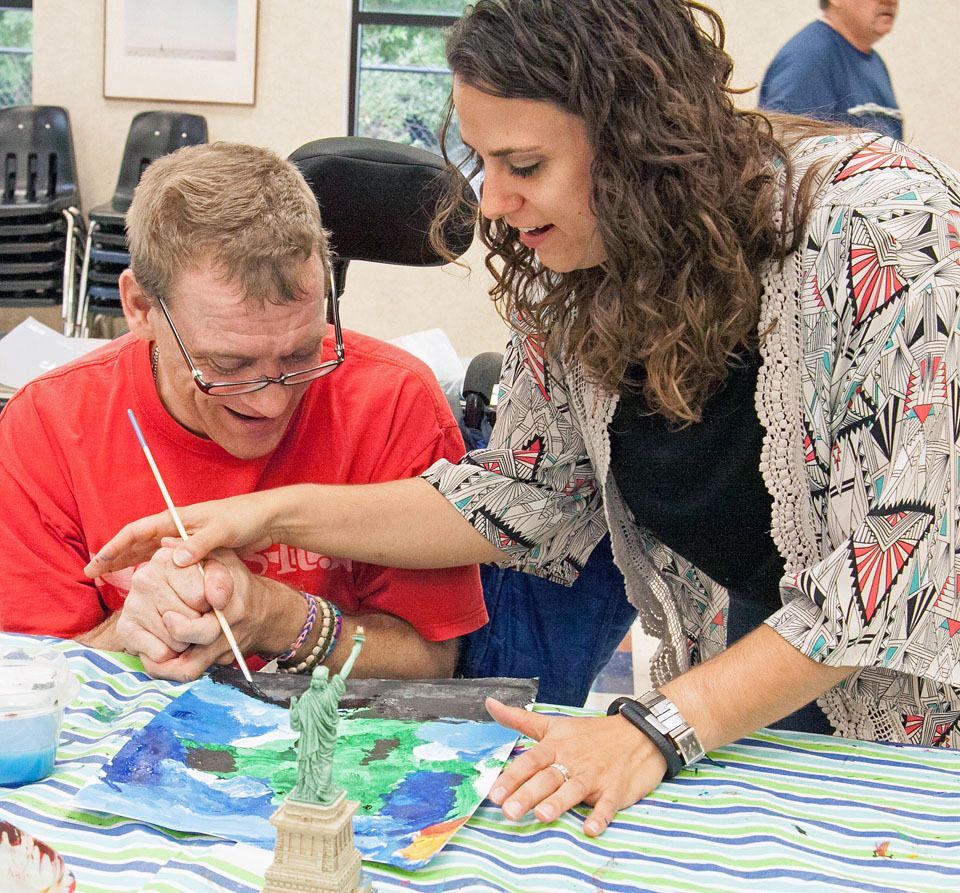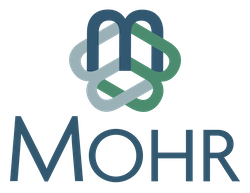
In the field of disability services, the people behind the work are what make organizations thrive. When a long-time leader announces their retirement, it can feel like the end of an era. But it’s also a valuable opportunity to strengthen your organization from within. Succession planning isn’t just about finding a replacement. It’s about building a culture of leadership development, preserving institutional knowledge, and ensuring that transitions happen with clarity, care, and continuity.
Why Start Now?
Retirements are rarely a surprise but, without a plan in place, they can still catch organizations off guard. Succession planning helps reduce that risk. By preparing well in advance, you give your team and board the time to thoughtfully manage the transition, communicate with staff and participants, and maintain service stability. Even if a retirement isn’t on the immediate horizon, planning ahead gives you time to identify potential internal candidates, build skills and confidence across your team, reduce points of failure, and keep your mission strong through leadership transitions. For a first hand view into the importance of succession planning, MOHR sat down with new leaders Tess Shipman, Executive Director at Mille Lacs Co. Area DAC; Tim Dickie, President and CEO at Rise; Lindsey Johnson, Director of HR at Achieve Services; and Jim Rooker, Program Director at Achieve Services.
Invest in Your People
When you’re thinking about future leaders in your organization, it’s important to look beyond just those who already hold formal titles. Pay attention to staff who are naturally curious, engaged, and open to learning. Sometimes you’ll spot these qualities in day-to-day interactions, but some organizations also take a more intentional approach by using annual surveys to better understand employee goals and aspirations. Johnson recommended working with each staff member to understand their interests and goals, and find ways to align them with organizational needs, while compensating them fairly for their skill development. Create development plans, identify skill gaps, and career milestones, and offer opportunities to collaborate alongside more exercised staff through stretch assignments, mentorship opportunities and team projects. Shipman stressed the value of retaining organizational knowledge and passion, giving an example of an exceptional individual who started as a DSP and, through internal development, rose within the organization to designated manager over a career lasting more than two decades. Dickie agreed, stating that Rise places great focus on accessing and developing their staff. When staff feel supported in their career, they are more likely to remain and grow in their organization.
One of the most important aspects of development, that is also vital to maintaining service stability, is cross-training for roles and tasks. Shipman agrees that single knowledge points can create a liability for your organization. Critical knowledge must be shared within the organization. Take the time to train others in essential tasks and document procedures so that continuity is never at risk. Dickie suggested that cross-training can be a fundamental aspect of formalized career growth as succession planning. Cross-training is a great opportunity for skill development and practical responsibility with minimal risk due to training oversight. Cross-training is valuable not only for succession planning but also as a fundamental layer of security for your operations. When multiple team members know how to perform key functions, the organization is better prepared to handle emergencies or unexpected leaves of absence without disruption.
By investing in your team, you retain valuable organizational knowledge, lower turnover rates, foster a positive work environment, and build a generational workforce that’s ready to step into new responsibilities, whether planned or unexpected. A strong internal development program can also be attractive to new workers and those considering entering the field. It sends a powerful message: that growth is possible here.
Make a Documented Plan
Not every organization has a formal succession plan but it’s a good idea to have the basework documented. Johnson recommends beginning by identifying the key positions in your organization and their critical tasks. A good point of reference is any existing job descriptions or onboarding materials as well as looking at regular tasks and duties performed outside the usual scope of the position. Make sure multiple people know how to complete those tasks, and write down the steps for future reference. Build onboarding materials and systems before you need them, and keep updated contact lists and credentials in shared systems. These simple steps can reduce stress when staff changes occur and make your organization more resilient. Johnson reminds us to review these plans and key functions yearly so that these plans stay up to date with real world task load.
Many organizations also recommend including action plans for critical roles in case of vacancy or unexpected absence. These can include everything from the process of transferring role materials to day one planning. Rooker recommends specifying a “back up” team member for senior positions in the case of unexpected absence or transitional leadership. Even if the succession is planned, it is important to consider the extent of the new hire’s adjustment and onboarding. It is best to have all necessary tasks written out beforehand rather than forget a critical piece of onboarding in the moment.
Some organizations choose to hire consultants to help build formal succession plans. Dickie considers this to be a worthwhile investment, especially when you're just getting started or planning for executive leadership positions. Regardless of how your organization chooses to move forward, be sure to review your succession and retirement plans every year. Include your board, and update as your team, needs, and goals evolve.
Planning for Retirement Transitions
When a senior staff member plans to retire, especially in executive roles, it’s important to prepare both the organization and its community for the change. Ideally, succession planning begins years before retirement. Transitions almost always take longer than expected; at a minimum, try to give the process six months to a year. Also consider the possibility of benefits of a phased retirement process to help get the new hire up to speed.
In executive transitions, your board (or a subcommittee) should be involved from the beginning. They can help shape the transition plan, develop a candidate profile, and participate in interviews. Dickie suggested that board members should also participate on internal panels hiring panels even when the position is not at the executive level. When developing the candidate profile, Rooker recommends interviewing staff, participants, family of participants, and leadership as well as considering the organization culture. Shipman recommended looking deeply into what the role entails especially regarding tasks or skill sets that go beyond the typical scope of the role. Decide if some of these tasks would be better suited for other roles in the organization or if these tasks will require specialized skill sets that can inform the ideal candidate profile.
While internal promotions are often ideal, sometimes you’ll need to look outside the organization to find the right candidate. Posting to job boards like Indeed, Facebook, or networks like MOHR can broaden your reach. For high-level positions, especially executive roles, some organizations turn to recruitment agencies or search firms. These firms can help identify candidates who not only meet the skill requirements but also understand the nuances of board relationships, nonprofit structures, and mission-driven leadership. Dickie spoke to the value added in utilizing a search firm for roles like President and CEO, considering the balance of industry knowledge, leadership skills, public relations, and innovative thinking that are required for such roles. Rooker provided insight that, when compared with the search firm, conducting an external search independently was much more time consuming. When an internal search is not producing the right fit search firms can be very helpful for candidates who fit the ideal profile. If you choose to go this route, Johnson advises looking for agencies with specific nonprofit experience and involving your board to help vet firms, shape the candidate profile, and ensure the final hire aligns with your organization’s values and goals. These searches often take several months, so plan ahead and make sure you have an interim plan if needed.
Once the decision has been made to begin a leadership transition, it’s important to communicate openly with staff and participants about the upcoming retirement and what they can expect throughout the process. Transparency not only builds trust but also helps prevent rumors, uncertainty, or unnecessary anxiety. Sharing clear information early on gives people the opportunity to prepare, both practically and emotionally, for the change.
A meaningful way to mark this moment is by celebrating the retiring leader’s contributions and years of service. Hosting a retirement gathering or creating a tribute provides staff, participants, and community members with a chance to express gratitude, share memories, and say goodbye. These celebrations help honor the individual while also giving the organization a healthy way to acknowledge the transition and begin moving forward together.
When it comes to welcoming a successor, whether promoted internally or hired externally, allow time for everyone to adjust. Shipman noted that just as an external hire can take some getting used to, your community may take some time to adjust to seeing and interacting with an internal hire in a new role. Johnson reminds us that change can bring both excitement and uncertainty, and it’s helpful to emphasize how the new leader will bring fresh ideas and perspectives even if they are in a different direction, encouraging us to consider how these fresh ideas can enhance the mission. This balance of honoring the past while embracing the future sets the tone for a smoother transition and ongoing stability.
Succession planning may take time and intentional effort, but the payoff is long-term stability for your organization and the people it serves. By investing in staff development, documenting critical processes, and preparing thoughtfully for retirements and leadership transitions, you ensure that knowledge is preserved, change is managed with care, and opportunities for growth are built into your culture. Ultimately, succession planning is about more than filling roles; it’s about creating a resilient organization that can thrive through change and continue moving forward with confidence.
